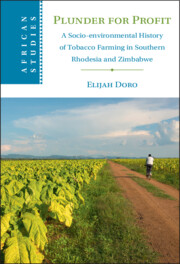Refine search
Actions for selected content:
58 results
2 - Healing and Ritual on the Move
- from Part I - Black Geographies
-
- Book:
- Black Catholic Worlds
- Published online:
- 28 August 2025
- Print publication:
- 11 September 2025, pp 81-122
-
- Chapter
- Export citation
62 - Toxicology
- from Subsection 4O - Clinical – Toxicology
-
-
- Book:
- Observation Medicine
- Published online:
- 27 June 2025
- Print publication:
- 26 June 2025, pp 369-376
-
- Chapter
- Export citation
Chapter 5 - Notification of Deaths to the Coroner and the Decision to Investigate
-
-
- Book:
- A Clinician's Brief Guide to the Coroner's Court and Inquests
- Published online:
- 14 November 2024
- Print publication:
- 21 November 2024, pp 19-26
-
- Chapter
- Export citation
Self-poisoning with paracetamol in England: short report of characteristics of individuals and their overdoses according to source of tablets
-
- Journal:
- BJPsych Open / Volume 10 / Issue 5 / September 2024
- Published online by Cambridge University Press:
- 19 September 2024, e155
-
- Article
-
- You have access
- Open access
- HTML
- Export citation
Is wearing these sunglasses an attack? Obligations under IHL related to anti-AI countermeasures
-
- Journal:
- International Review of the Red Cross / Volume 106 / Issue 926 / August 2024
- Published online by Cambridge University Press:
- 20 March 2024, pp. 732-759
- Print publication:
- August 2024
-
- Article
- Export citation
1 - Phillis and Phoebe
-
- Book:
- Brooding over Bloody Revenge
- Published online:
- 13 July 2023
- Print publication:
- 13 July 2023, pp 22-51
-
- Chapter
- Export citation
3 - A Silenced Spring? Exploring Africa’s ‘Rachel Carson Moment’
-
- Book:
- Plunder for Profit
- Published online:
- 06 April 2023
- Print publication:
- 13 April 2023, pp 123-164
-
- Chapter
- Export citation

Plunder for Profit
- A Socio-environmental History of Tobacco Farming in Southern Rhodesia and Zimbabwe
-
- Published online:
- 06 April 2023
- Print publication:
- 13 April 2023
Chapter 8 - Comparing FSKs and MSKs: Crimes and Victims
-
- Book:
- Just as Deadly
- Published online:
- 06 January 2023
- Print publication:
- 09 February 2023, pp 131-146
-
- Chapter
- Export citation
The Welfare of Free-Living Wild Animals in Europe: Harm Caused by Human Activities
-
- Journal:
- Animal Welfare / Volume 4 / Issue 3 / August 1995
- Published online by Cambridge University Press:
- 11 January 2023, pp. 183-206
-
- Article
- Export citation
2 - Poisoning and the Problem of Proof
-
- Book:
- The Science of Proof
- Published online:
- 25 August 2022
- Print publication:
- 01 September 2022, pp 45-78
-
- Chapter
- Export citation
3.8.1 - Toxicology
- from Section 3.8 - Intoxication with Drugs or Environmental Toxins
-
-
- Book:
- Intensive Care Medicine
- Published online:
- 27 July 2023
- Print publication:
- 01 December 2021, pp 297-306
-
- Chapter
- Export citation
Pursuit of ‘sustainable’ development may contribute to the vulture crisis in East Africa
-
- Journal:
- Bird Conservation International / Volume 32 / Issue 2 / June 2022
- Published online by Cambridge University Press:
- 21 July 2021, pp. 173-187
-
- Article
- Export citation
Vitamin and mineral supplement exposures: cases reported to Australia’s largest Poisons Information Centre, 2014–2015 to 2018–2019
-
- Journal:
- British Journal of Nutrition / Volume 126 / Issue 12 / 28 December 2021
- Published online by Cambridge University Press:
- 18 February 2021, pp. 1788-1793
- Print publication:
- 28 December 2021
-
- Article
-
- You have access
- HTML
- Export citation
Changes in nesting numbers and breeding success of African White-backed Vulture Gyps africanus in north-central Botswana
-
- Journal:
- Bird Conservation International / Volume 30 / Issue 3 / September 2020
- Published online by Cambridge University Press:
- 24 April 2020, pp. 456-473
-
- Article
- Export citation
Suicide trends diverge by method: Swiss suicide rates 1969–2005
-
- Journal:
- European Psychiatry / Volume 25 / Issue 3 / April 2010
- Published online by Cambridge University Press:
- 16 April 2020, pp. 129-135
-
- Article
- Export citation
Global Characteristics of Chemical, Biological, and Radiological Poison Use in Terrorist Attacks
- Part of
-
- Journal:
- Prehospital and Disaster Medicine / Volume 35 / Issue 3 / June 2020
- Published online by Cambridge University Press:
- 02 April 2020, pp. 260-266
- Print publication:
- June 2020
-
- Article
- Export citation
Transient ST Segment Elevation Caused by Intracoronary Thrombus after Acute Carbon Monoxide Poisoning
-
- Journal:
- Prehospital and Disaster Medicine / Volume 34 / Issue 6 / December 2019
- Published online by Cambridge University Press:
- 09 October 2019, pp. 677-680
- Print publication:
- December 2019
-
- Article
- Export citation
Wide alternating QRS complexes from herbal poisoning
-
- Journal:
- Canadian Journal of Emergency Medicine / Volume 21 / Issue 5 / September 2019
- Published online by Cambridge University Press:
- 27 June 2019, pp. 676-679
- Print publication:
- September 2019
-
- Article
-
- You have access
- HTML
- Export citation
Accidental transdermal methanol poisoning presenting to a regional emergency department
-
- Journal:
- Canadian Journal of Emergency Medicine / Volume 21 / Issue 3 / May 2019
- Published online by Cambridge University Press:
- 30 January 2019, pp. 435-437
- Print publication:
- May 2019
-
- Article
-
- You have access
- HTML
- Export citation
